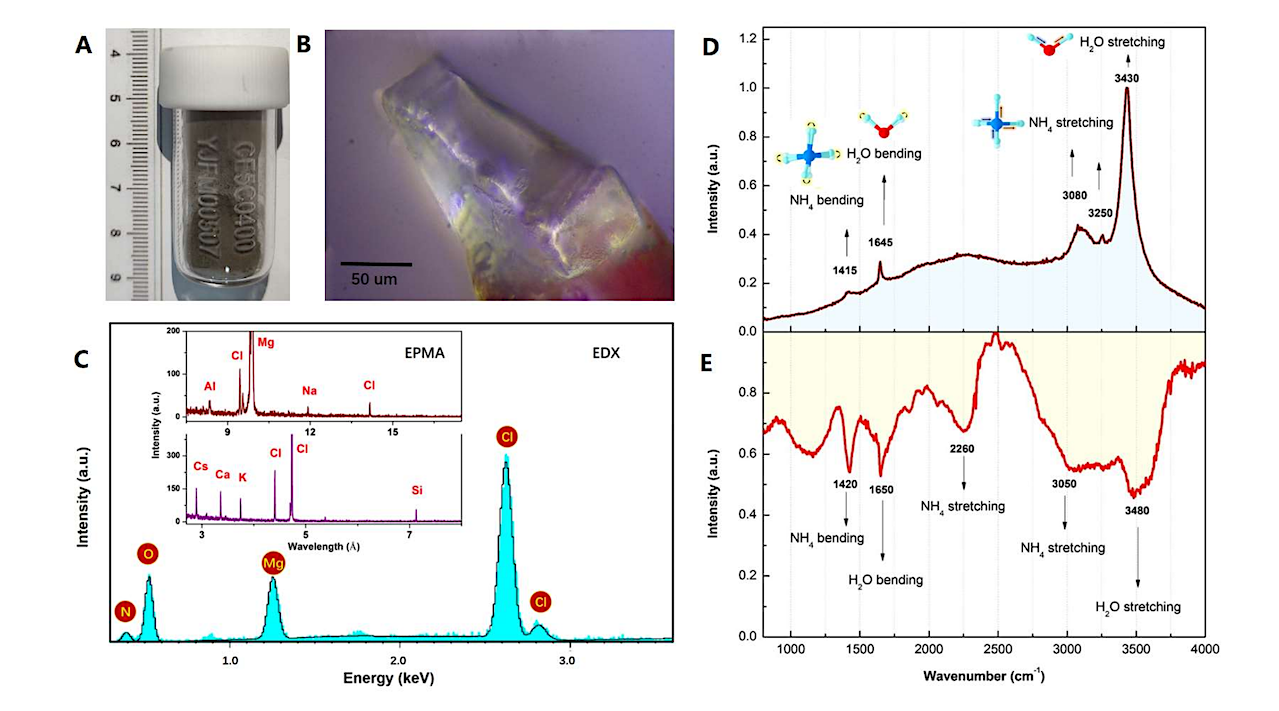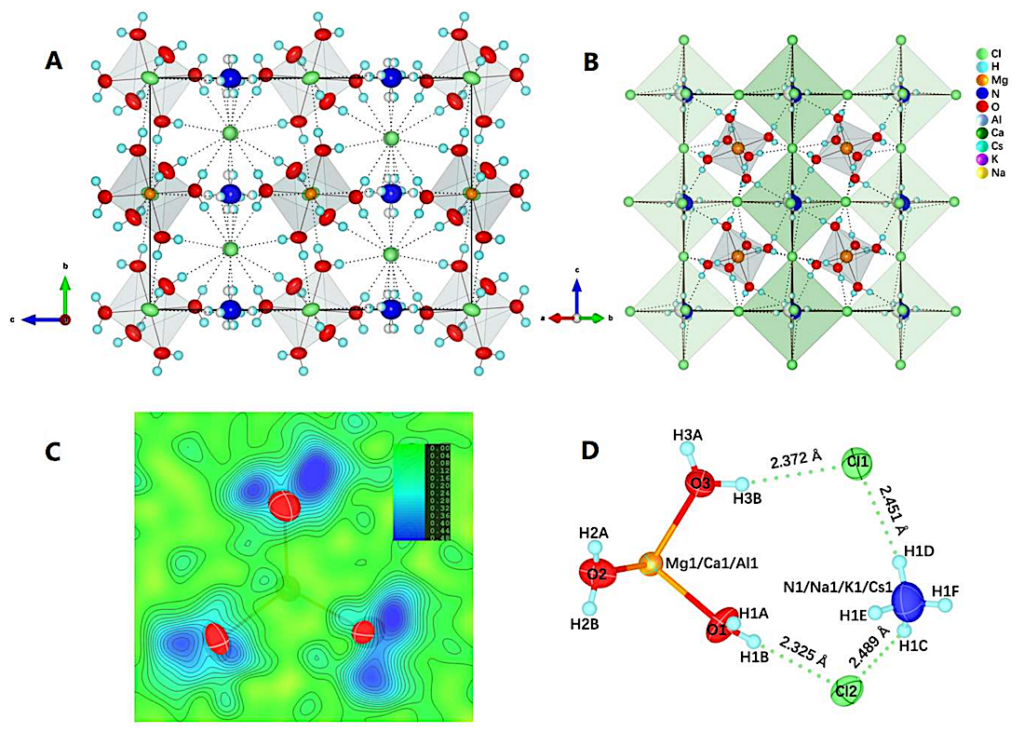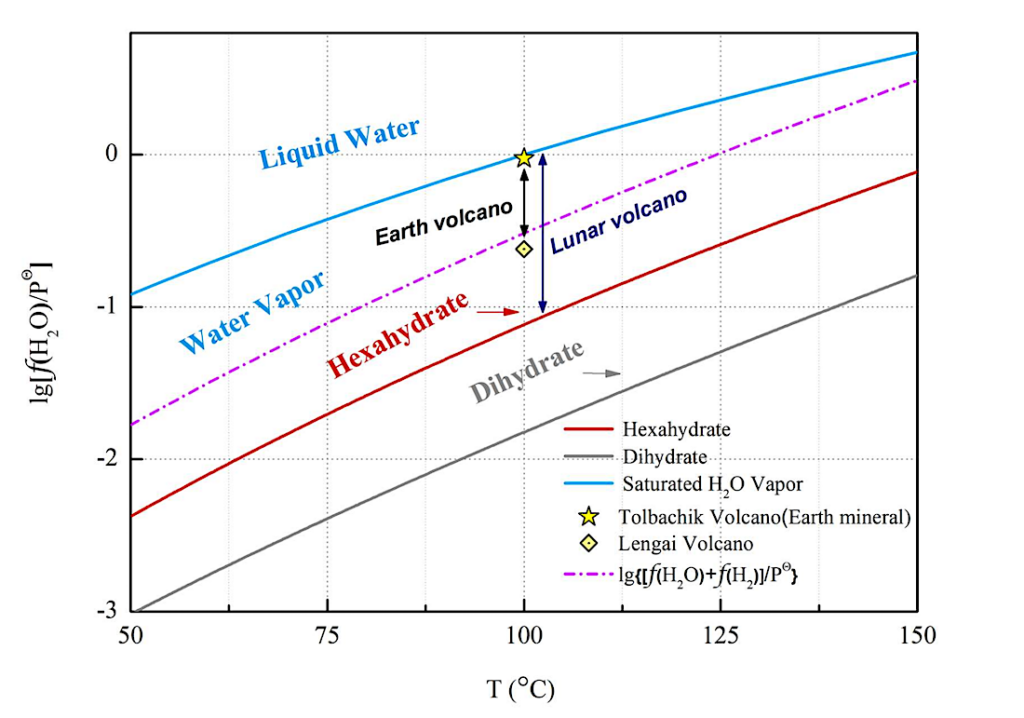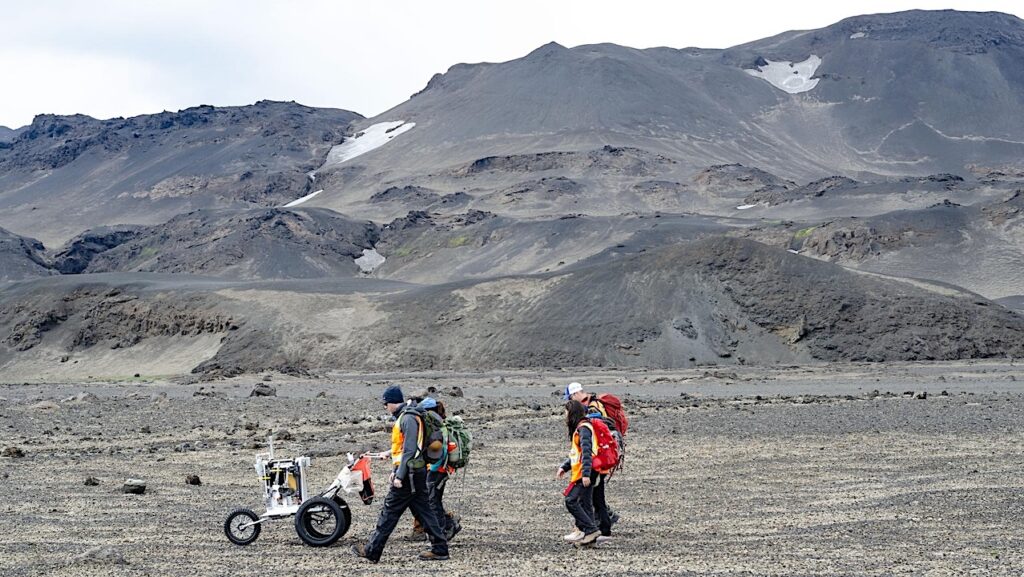Discovery Of A New Lunar Mineral Rich In Water And Ammonium In Lunar Soils Returned By Chang’e-5 mission

The origin and distribution of lunar water are among the most important issues in understanding the earth-moon system. After more than half a century of laboratory research and remote detection, only hydroxyl contained minerals and lunar ice (H2O) are identified.
Here we report the discovery of a hydrous mineral (NH4)MgCl3(H2O)6 in the lunar soil returned by Chang’e-5 mission, which contains 417,000 parts per million H2O. The determined structure and composition are similar to novograblenovite-a terrestrial fumarole mineral formed by reaction of hot basalt in water-rich volcanic gases, whereas the measured isotope composition delta37Cl reached 20.4 parts per thousand, a high value that only found in lunar minerals.
We rule out the possibility that this hydrate originated from terrestrial contaminants or rocket exhaust through analysis of its chemical, isotopic compositions as well as the formation conditions. Our finding indicates that water can exist on some parts of the sunlit Moon in the form of hydrate compounds. Moreover, this hydrate is rich in ammonium, providing new information in understanding the origin of the Moon.

Figure 2. Crystal structure and charge density of lunar hydrate ULM-1. (A) Crystal structure of lunar mineral (NH4)MgCl3·6H2O, the dotted lines present a network of hydrogen bond interactions around the H2O molecules and NH4+ ions. (B) The mineral crystalized in a perovskitelike structure. (C) Differential charge density analysis around all the oxygen atoms shows clearly the H peaks. (D) The atoms in an asymmetric unit, where three independent H2O molecules in a [Mg(H2O)6] 2+ unit and the NH4+ motif are interconnected by Cl-. — astro-ph.EP

Figure. 3. Chlorine isotope composition of solid materials in solar system. Inset: NanoSIMS scanning Cl isotope image of ULM-1 specimen. Samples from the Earth, Meteorites, Comets, the Mars and the Moon are shown as blue, green, olive, yellow and half red symbols, respectively. Chlorine isotope composition of ULM-1 is shown in green pentagram. The terrestrial and meteorite data are from Ref. (51) and therein. Error bars are smaller than the size of symbols. — astro-ph.EP

Figure. 4. Constraints on water fugacity 𝒇(𝑯𝟐𝑶) by the crystallization of ULM-1. The hexahydrate is stable above its thermodynamic equilibrium line (red), which constitutes the lower limit of 𝑓(𝐻ଶ𝑂) for lunar volcanic gases. The vapor-liquid phase boundary of water forms the upper limits (blue). Between the red and gray lines, a dihydrate phase of NLM-1 become thermodynamically more stable. Reference to the formation temperature of the earth mineral (>100 °C), the lower limit of 𝑓(𝐻ଶ𝑂) reached 1/3 of the record value in the driest volcano on earth – Lengai volcano (diamond). Taking H2 degassing into account, the 𝑓(𝐻ଶ𝑂 + 𝐻ଶ) values (purple doted line) become comparable to some ‘hot spot’ volcanoes on earth. 𝑃∅ is the standard pressure (1 atm). — astro-ph.EP
Shifeng Jin, Munan Hao, Zhongnan Guo, Bohao Yin, Yuxin Ma, Lijun Deng, Xu Chen, Yanpeng Song, Cheng Cao, Congcong Chai, Yunqi Ma, Jiangang Guo, Xiaolong Chen
Comments: 17 pages, 4 figures
Subjects: Earth and Planetary Astrophysics (astro-ph.EP); Materials Science (cond-mat.mtrl-sci); Geophysics (physics.geo-ph)
Cite as: arXiv:2305.05263 [astro-ph.EP] (or arXiv:2305.05263v1 [astro-ph.EP] for this version)
Submission history
From: Shifeng Jin Dr. [view email]
[v1] Tue, 9 May 2023 08:35:28 UTC (1,538 KB)
https://arxiv.org/abs/2305.05263
Astrobiology, Astrochemistry, Artemis








